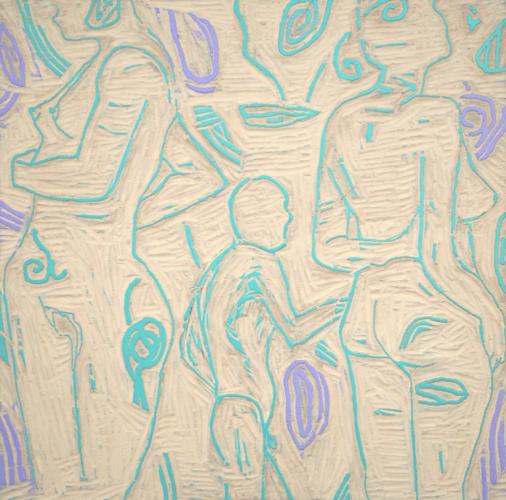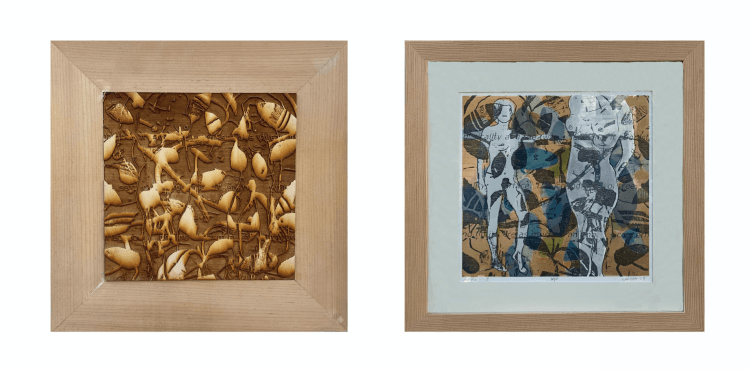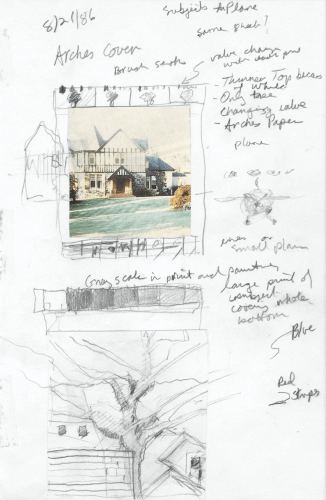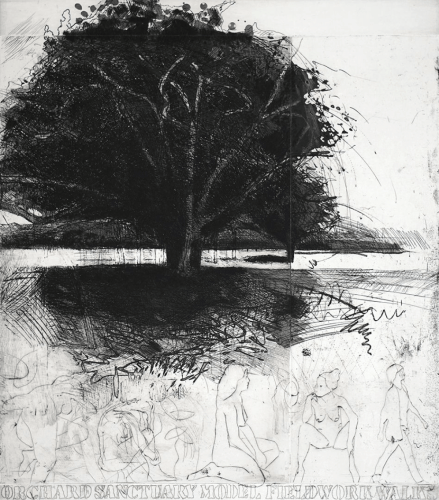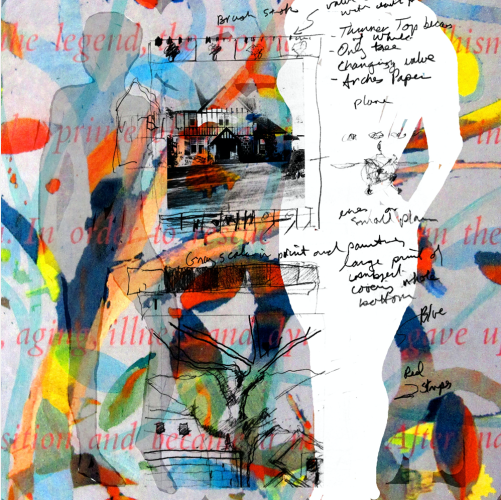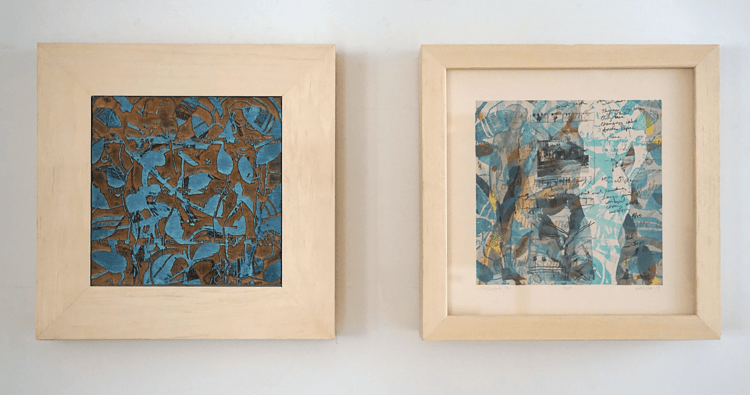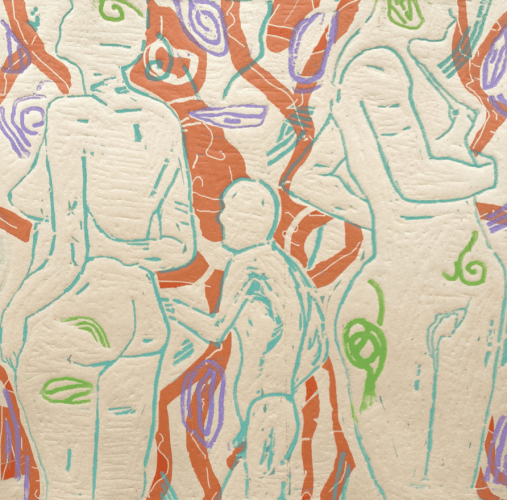H. Peik Larsen
Prints in Time
June 24th - August 1st, 2021
FOR IMMEDIATE RELEASE
Arts+Leisure is thrilled to announce Prints in Time, an exhibition of a new body of work by Peik Larsen. The exhibition will run from June 24th through August 1st, 2021 with a public reception on Thursday, June 24th from 6 - 8 pm.
Critics and art historians alike generally distinguish prints from fine art. This is largely due to a loaded history that implies some superordinate autonomy of art—to say nothing of the creative act and its relationship to an artist's individual genius. Somehow it’s been implanted in our consciousness that what can exist in multiple forms is inherently of less value than what can exist only in terms of a singularity.
One reason prints often get a short shrift is that they're typically the products of collective labor. As much work as artists put into their prints, they rarely produce them by themselves. Peik Larsen, however, while engaging in this venerable process, has circumvented the limitations generally thought of in connection with prints. He makes images that foreground the interrelationship of process and collectivity; which in Hermetic terms might be called a "sympathy" (συμπάθεια) between disparate planes of experience.
Consider how the qualities of distance, color, and thematization enter into Larsen's works. The black and white intaglio Atlas underscores a tree growing from a river. But this river is the same coloration as the background paper itself. This being the case, a storied history of causality and materiality ensues. Rather than a print being a secondary way of presenting an artwork or image, the dimensions of the piece, and the material it's printed on, all combine to create a unified perceptual gestalt. This unity is not taken at face value; nor is it even sought after by Larsen. The old- style demand for pictorial unity seems to be a byproduct of the medium itself. Larsen's Atlas is also stippled with zigzagging lines extending from the reflected shadows of the tree; and nudes adorn the image like a wallpapered mist.
None of this is decorative so much as it’s simultaneous. Larsen’s condensation of imagery doesn't suggest time so much as space: like viewing a world through different windows of synthesized sensation. Just as our sense- impression of an object is an immediate combination of different qualities, Larsen's picture comes together in terms of an autonomous objective unity that highlights their constructed aspect. Prints in Time, in other words, speak to the processional accumulation of details in space.
What better way to dwell on the representational accumulation of space—the meaning of nuance, the significance inscribed in relational details—than through the course of prints. There's an inherent dynamism to the production of a print series. As a completionist project, the physical dimensions of a series of prints can exist in different places simultaneously. This generally has little to do with the theme a series of prints puts forth. In Larsen's work, however, the theme itself is multitudinousness tempered by the limitations inherent in working with such a maligned medium.
It's not that Larsen’s works refuse to communicate an ambition not typically found in prints (they most certainly do), but rather that they utilize the processional, rhythmic repetition specific to prints as an armature. Out of this they recreate protracted meditations on the nature of space, embodiment, and form. Larsen’s works have a lyrical flow that unfolds serially. Measured repetitions lend a superadded emphasis which a single image, in and of itself, would lack.
Two of the works titled Ternion illustrate this beautifully. The way the figures become reversed in these images communicates less the dynamism of a flip-book, and more the variations inherent in how the human form is represented. Like tiny monoliths, variation depends on a monumental constancy: only here, the presence of constancy is nothing less than human life itself, which inevitably marches along the tragic-comic path which is the way of all flesh.
Banyan: Notes: Outline along with Fieldwork 3 (which is composed of actual rollers Larsen used to make his prints) both emphasize this human aspect. Each foregrounds how the human form unfolds in time, while developing and multiplying in space. The tension between temporized rhythm and spatial distance, between quantity and quality, is, to my mind, the crux of Prints in Time. If you could spatialize time—if you could insert a foreign element into the continuous stream of our inner sense... What would take place? What could we see, think, hope for?
Banyan: Notes: Outline tackles these questions directly. The handwritten scrawls included in the finalized image are quotidian, a practical rumination on the art of printing. Meanwhile, the silhouettes and other handwritten elements that compose the work are illustrations of what could come out of the perfected realization of these ideas. One could say that the figures in this work emanate from the thoughts contained in the handwriting. And the rollers featured in Fieldwork 3 showcase how even the tools of Larsen’s process are instrumental in the development of a graduated series. Rather than making works that are either “figurative" or "abstract," Larsen's multiples are genuinely multitudinous—in form as well as content.

